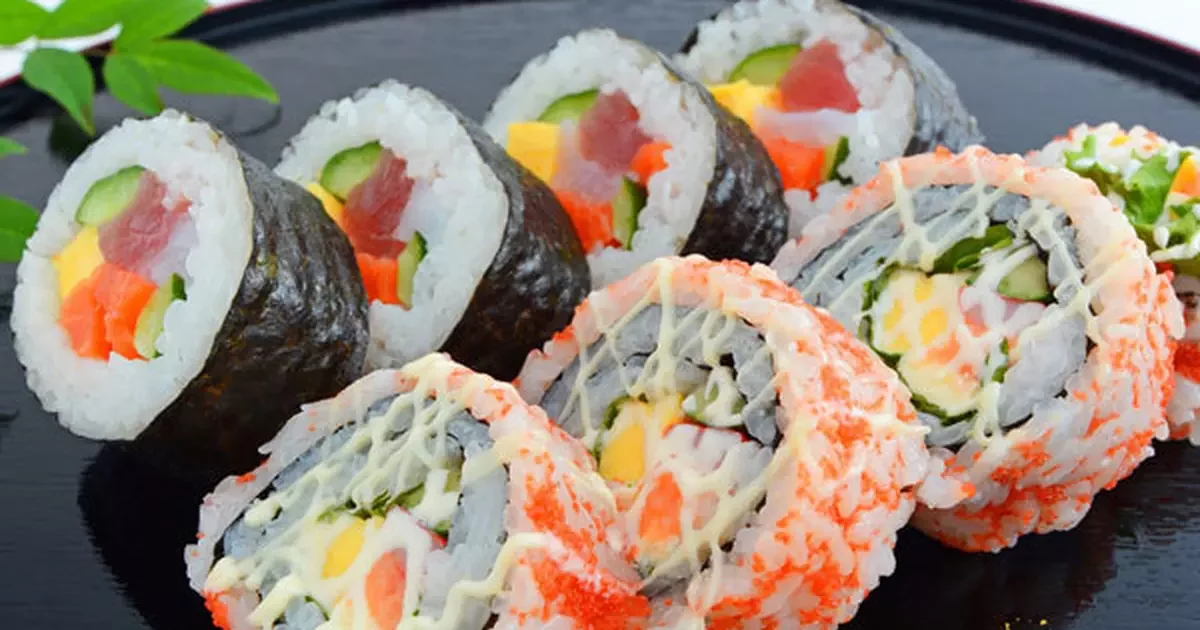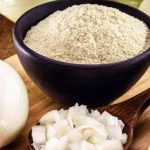Maki vs Temaki
The topic of sushi cannot be discussed well enough without the mention and dissection of the two prominent types of sushi enjoyed by all sushi lovers. The differences that makes maki sushi different from temaki sushi is what I would be discussing in this maki vs temaki sushi article. Whether you’ve had sushi before or not, or you have had sushi but didn’t know what type of sushi you were served, this article would teach you the differences and how to spot them. Temaki sushi is a very wonderful sushi to try out just as maki equally is. Before diving into the differences of each sushi type, let’s first know what they are and how they are made.
What is Temaki Sushi?

Temaki sushi, also known as hand rolls, is a popular and interactive form of sushi that allows you to unleash your creativity and savor the flavors of fresh ingredients. As an experienced cook and lover of Japanese cuisine, I am thrilled to guide you through the art of creating exquisite temaki sushi. From selecting the finest ingredients to mastering the art of rolling, this guide will help you craft delicious hand rolls that will impress your guests and elevate your sushi game.
Understanding Temaki Sushi:
Temaki sushi is a cone-shaped hand roll made by wrapping sushi rice, nori (seaweed), and various fillings in a vibrant and flavorful package. Unlike maki sushi, which is rolled into cylindrical shapes, temaki sushi allows you to customize each roll according to your preferences. The combination of fresh ingredients, crisp nori, and fluffy sushi rice creates a delectable balance of flavors and textures in every bite.
Selecting Quality Ingredients
To create outstanding temaki sushi, it is essential to start with high-quality ingredients. Here are some guidelines:
- Sushi Rice: Opt for short-grain Japanese rice known for its stickiness. Rinse the rice thoroughly before cooking to remove excess starch and ensure a perfect texture.
- Nori: Choose nori sheets that are dark green and crisp, without any tears or holes. Fresh nori provides a satisfying crunch and imparts a subtle taste of the sea.
- Fillings: Select a variety of fresh ingredients, such as sashimi-grade fish, crunchy vegetables, and complementary flavors like avocado, cucumber, or pickled radish. Explore different textures, colors, and tastes to create an exciting assortment of fillings.
Preparing Sushi Rice:
The sushi rice forms the foundation of temaki sushi and requires proper preparation. Follow these steps:
- Cooking: Use a rice cooker or a heavy-bottomed pot to cook the rice. Follow the recommended water-to-rice ratio and allow the rice to rest for around 10 minutes after cooking to achieve the desired consistency.
- Seasoning: While the rice is still warm, gently fold in a mixture of rice vinegar, sugar, and salt. Use a slicing motion with a wooden spatula to evenly distribute the seasoning without mashing the grains.
- Rolling Technique: Rolling temaki sushi is an enjoyable and hands-on experience. Here’s a step-by-step guide to mastering the art:i. Prepare a clean and damp kitchen towel or a bamboo sushi mat on a flat surface.ii. Place a sheet of nori diagonally on the towel or sushi mat, ensuring that the longest edge is closest to you.iii. Wet your hands with water to prevent sticking. Take a small handful of sushi rice and gently spread it across the lower half of the nori, leaving the top edge free.
iv. Add a variety of fillings, arranging them diagonally across the rice.
v. Starting from the bottom corner, tightly roll the nori into a cone shape, using the towel or sushi mat to guide the roll. Ensure the filling is enclosed within the nori.
vi. Wet the top edge of the nori to seal the cone.
Presentation and Serving:
Temaki sushi offers an opportunity for artistic presentation. Consider these suggestions:
- Arrange the hand rolls on a platter or individual plates, showcasing their beautiful cone shape.
- Serve temaki sushi with traditional accompaniments like soy sauce, wasabi, and pickled ginger.
- Encourage your guests to customize their own hand rolls by providing a variety of fillings, condiments, and additional garnishes.
Temaki sushi allows you to express your culinary creativity while savoring the freshness of high-quality ingredients. With this guide, you can confidently create a delightful array of hand rolls that will impress your guests and elevate your sushi-making skills. Enjoy the process, experiment with flavors, and let your imagination run wild as you embark on the artistry of temaki sushi.
What is Maki Sushi?

Maki sushi, also known as sushi rolls, is one of the most popular and recognizable forms of sushi around the world. With its beautiful presentation and harmonious blend of flavors, maki sushi has become a favorite choice for sushi enthusiasts everywhere. As an experienced cook and lover of Japanese cuisine, I am delighted to share my insights and expertise on the art of making maki sushi. From selecting the freshest ingredients to mastering the rolling technique, this guide will help you create delectable maki sushi that will impress your family and friends.
Understanding Maki Sushi:
Maki sushi consists of three main components: sushi rice, nori (seaweed), and various fillings. The key to successful maki sushi lies in the balance between these elements. Sushi rice, seasoned with a mixture of rice vinegar, sugar, and salt, acts as the foundation, providing a slightly tangy flavor and sticky texture. Nori acts as the wrapper, adding a subtle oceanic taste and a satisfying crunch. Fillings can range from fresh vegetables and seafood to cooked meats and tofu, allowing for endless creative possibilities.
Selecting Quality Ingredients:
To create exceptional maki sushi, it is crucial to start with high-quality ingredients. Here are some tips:
- Sushi Rice: Choose short-grain Japanese rice for its stickiness and ability to hold its shape. Rinse the rice thoroughly before cooking to remove excess starch.
- Nori: Look for crisp, dark green sheets of nori that are not brittle. Ensure they are fresh and free from any tears or holes.
- Fillings: Opt for fresh and seasonal ingredients. From classic choices like tuna, salmon, cucumber, and avocado to more adventurous options like tempura shrimp or pickled radish, select ingredients that complement each other in taste, texture, and color.
Preparing Sushi Rice:
Sushi rice is the backbone of maki sushi, and proper preparation is essential. Follow these steps:
- Cooking: Use a rice cooker or a heavy-bottomed pot to cook the rice. Follow the recommended water-to-rice ratio and let the rice rest for about 10 minutes after cooking to achieve the perfect texture.
- Seasoning: While the rice is still warm, gently fold in a mixture of rice vinegar, sugar, and salt. Be cautious not to mash the grains; instead, use a slicing motion with a wooden spatula to evenly distribute the seasoning.
Mastering the Rolling Technique:
Rolling maki sushi can be intimidating for beginners, but with practice and patience, you’ll become adept. Here’s a simplified method:
- Place a sheet of nori on a bamboo sushi mat, shiny side down.
- Wet your hands with water to prevent sticking and grab a handful of sushi rice. Spread it evenly over the nori, leaving a small margin at the top.
- Add your chosen fillings in a thin line across the rice, near the bottom edge.
- Using the sushi mat, roll the maki tightly, applying gentle pressure to ensure a firm shape.
- Wet the margin of the nori to seal the roll. Slice it into bite-sized pieces using a sharp knife.
Presentation and Serving:
Maki sushi is not just about taste but also visual appeal. Consider these tips for an impressive presentation:
- Slice the rolls evenly, wiping the knife between each cut to maintain clean edges.
- Arrange the sushi pieces on a platter, garnishing with pickled ginger, wasabi, and soy sauce for dipping.
- Experiment with various plating styles, such as creating decorative patterns or arranging the sushi in a spiral shape.
In conclusion, maki sushi offers a delightful culinary experience that combines skill, creativity, and a passion for quality ingredients. By following this guide, you can become a master of maki sushi, delighting your taste buds and those of your loved ones. Remember, practice makes perfect, so don’t be afraid to experiment and add your personal touch to this beloved Japanese dish. Enjoy the process, and soon you’ll be creating sushi rolls that are as beautiful as they are delicious.
Maki vs Temaki Comparison
Maki sushi and temaki sushi are both popular forms of sushi, but they differ in their presentation, size, and eating experience. Those differences are the reason we have the temaki vs maki comparison in the first place. Let’s compare these two sushi styles:
Presentation:
- Maki Sushi: Maki sushi is rolled sushi, characterized by its cylindrical shape. It is made by wrapping sushi rice, nori (seaweed), and various fillings tightly together. Maki sushi is then sliced into bite-sized pieces, typically 6-8 bite-sized rolls per roll.
- Temaki Sushi: Temaki sushi, on the other hand, is hand-rolled sushi in the shape of a cone. It is assembled by wrapping sushi rice, nori, and fillings in a cone shape. Temaki sushi is served as a whole roll, allowing the diners to hold it and eat it like a handheld taco.
Size and Portability:
- Maki Sushi: Maki sushi is smaller in size compared to temaki sushi. Each piece of maki sushi is typically a bite-sized portion, making it easy to eat with chopsticks. Due to its size, maki sushi is great for sharing and can be enjoyed in multiple varieties.
- Temaki Sushi: Temaki sushi is larger and offers a more substantial serving. The cone shape allows for more fillings, resulting in a generous portion size. Temaki sushi is usually eaten immediately after assembly, as the cone shape can make it more difficult to store or transport.
Customization:
- Maki Sushi: Maki sushi offers the ability to create a variety of bite-sized rolls with different fillings. The cylindrical shape allows for precise slicing and presentation. Maki sushi can be prepared with a combination of traditional and creative fillings, making it versatile and customizable.
- Temaki Sushi: Temaki sushi provides an interactive and customizable experience. Each person can assemble their own hand rolls by choosing their preferred fillings and rolling them to their liking. This allows for personalization and experimentation with flavors and textures.
Eating Experience:
- Maki Sushi: Maki sushi is typically eaten with chopsticks or fingers, and each piece is meant to be consumed in one or two bites. The small size and compact shape make it easy to enjoy a variety of flavors in one sitting. Maki sushi offers a balanced combination of rice, nori, and fillings in each bite.
- Temaki Sushi: Temaki sushi offers a more interactive and casual dining experience. It is held in the hand like a taco and eaten in a few bites. The larger size allows for a more substantial bite and a combination of flavors with each mouthful. The crispness of the nori and the balance of fillings create a delightful texture and taste experience.
These comparisons are often times better represented on tables for easier understanding and assimilation of the information. Below is a table comparing maki sushi to temaki sushi, noting all the important features of the sushis.
Temaki vs Maki Sushi Comparison Table
| Features | Maki Sushi | Temaki Sushi |
|---|---|---|
| Shape | Cylindrical rolls | Cone-shaped hand rolls |
| Presentation | Sliced into bite-sized pieces | Served as a whole roll |
| Size | Small and bite-sized portions | Larger and more substantial portions |
| Portability | Easy to eat with chopsticks | Best enjoyed immediately after assembly |
| Customization | Variety of fillings in each roll | Personalized assembly with preferred fillings |
| Eating Experience | Precise bites with a variety of flavors | Interactive, handheld taco-like eating experience |
| Serving Style | Shared platter of sliced rolls | Individual rolls or DIY assembly |
| Versatility | Different combinations and creative fillings | Experimentation and personalization |
While both maki sushi and temaki sushi share the common elements of sushi rice, nori, and fillings, they differ in their presentation, size, and eating experience. Maki sushi offers bite-sized, precisely sliced rolls, while temaki sushi provides a larger, customizable hand-rolled cone. Each style has its unique charm, and the choice between maki and temaki sushi often depends on personal preference and the dining occasion.
Temaki Sushi Recipe

Temaki Sushi Recipe
Equipment
- Rice cooker
Ingredients
- 1 tsp sugar and a pinch of salt
- 1 carrot finely sliced
- 1 cucumber sliced into strips
- 1½ tbsp rice wine vinegar
- 2 tbsp sushi vinegar Sub
- 2 nori sheets per person sliced in half
- 2-3 tbsp kewpie mayonnaise
- 6 cups cooked sushi rice
- 200g tuna canned in brine
- soy sauce
- wasabi
Instructions
- Transfer cooked sushi rice to a wide, flat-bottomed pan or dish.
- Pour the sushi vinegar over the cooked rice and mix gently with a flat rice paddle to avoid breaking any of the grains. Allow the rice to cool completely before serving.
- Mix tuna and kewpie mayo in a small bowl until well combined. Add more kewpie mayo as required until you have a smooth texture and delicious flavour
- Take up a sheet of nori (sliced or broken it in half into a rectangle shape) and place it in your hand or on a plate. Top with a scoop of rice in the top left corner in a roughly triangular shape.
- Layer on your chosen fillings (such as the tuna with kewpie mayo, carrot and cucumber). Fold the bottom left corner up and over the fillings, then continue to roll into a cone shape.



